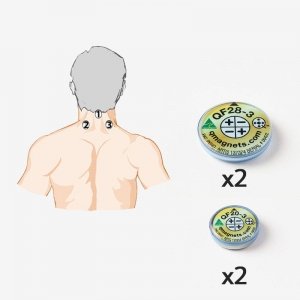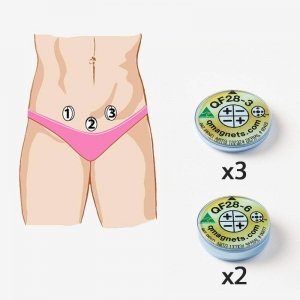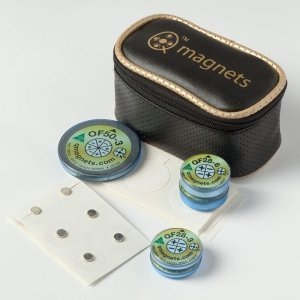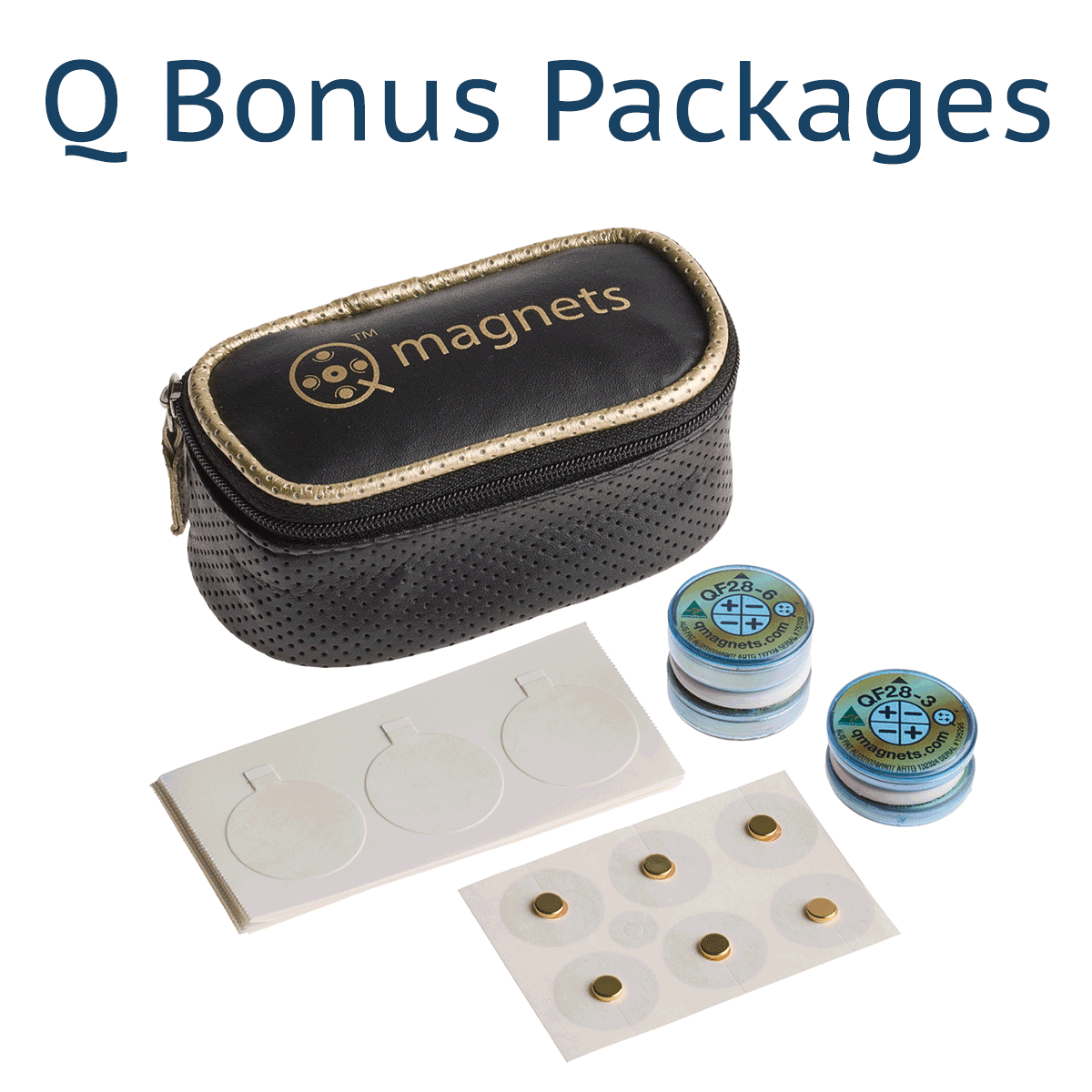SUMMARY:
- Transcranial Magnetic Stimulation (TMS) passes an unimpeded magnetic field through the scalp and skull.
- The action on the brain is caused by electromagnetic induction, which is basically creating electrical activity within a very specific part of the brain through a changing magnetic field.
- The magnetic field has been optimised for the therapy and the dose given to a precise part of the brain.
- This article will also discuss tSMS or Transcranial Static Magnetic Field Stimulation.
- Research has found it to be as effective as anti-depressants and that’s even with patients who did not respond to anti-depressant medication.
Transcranial Magnetic Stimulation (TMS), what’s in a name:
- Transcranial – across or through the cranium (skull)
- Magnetic – apyling a magnetic field
- Stimulation – activating or modulating neural activity
Sometimes known as repetitive rTMS, it directs strong magnetic field pulses into specific parts of the brain to stimulate a response. For instance, the prefrontal cortex is a target to treat depression. The magnetic treatment has been approved in many countries such as the United States for the treatment of medication resistant depression. However in countries such as Australia, it has yet to receive access to Medicare funding. TMS is an emerging field with many therapeutic applications and a growing list of conditions such as anxiety, PTSD and OCD.

George MS. Stimulating the Brain. Scientific American . Illustration of TMS.
Descartes said, I think, therefore I am. While Proverbs says as he thinketh in his heart, so is he. The point is, our thoughts largely determine who we are and how we behave. Internal and external stimuli trigger a series of signals within the brain that are transformed into thoughts. Our thoughts can reside in the electromagnetic pathways between brain cells that are connected via electrical and chemical messengers. Each type of thought or feeling corresponds with a neural pathway within the brain. And neurons that fire together wire together, so through repetition, our thinking or “thought patterns” become somewhat fixed and difficult to change.
By mapping the brain, neuroscientists have shown that people suffering from depression have an inactive part of their brain called the limbic system. The limbic system is the emotional centre of the brain and where we experience happiness and contentment. A therapist might assist a patient to stimulate the limbic system with one positive thought at a time. But while a singular positive thought might leave a brief footprint, it takes thousands of such experiences to create a new pathway. Some psychiatrists explain the way TMS works is by stimulating these “happy” pathways between the prefrontal cortex and limbic system thousands of times per session. Over 30 treatment sessions, that may account for over 100,000 synaptical surges that builds a new dominant neural pathway.
Traditionally, depression has been treated with talk therapy and medications such as Zoloft, Prozac, Abilify etc. Patients who fail with more than one medication, have less than a 15 percent chance of success with additional meds. But with TMS, their chances of treatment success can be up to 80 percent. Another benefit is that many patients taking multiple anti-depressant medications are able to cut back and in some cases reduce it to only one.
In an interview with psychiatrist Dr Heather Luing MD on KevinMD, she provided the following statistics which were confirmed by her own clinical experience.
- 70% of patients experience a benefit of 50% or more
- 80% were still showing improvement after 12 months
- So the majority of patients who had not responded to two or more antidepressant medications experienced effective and sustained results from TMS.
Very well explained, with great questions and a nice touch with the woodpecker comparison. Outcomes of 70% of patients experiencing a benefit of 50% or more is remarkable and long lasting, with 80% still improved after 12 months. Just like magnetic fields have been optimised to treat treatment-resistant depression, they have also been optimised to treat treatment-
The typical TMS treatment runs daily for about 37 minutes over 4-6 weeks. But this is an emerging field and treatment protocols are changing as new processes are developed and validated. A recent device by MagVenture has developed what’s called a theta burst stimulation which is completed in only three minutes. To elevate activity within the brain, the stimulus needs to be of sufficient amplitude and duration.
So while the pulsed magnetic fields produced by TMS devices are somewhat different to the static magnetic fields from Q Magnets. There is new research investigating if static magnets can be just as effective. The potential benefits of using static magnets are…
- Relatively inexpensive
- Does not require daily visits to a medical centre.
- Once shown, can be used daily at home.
- Can save time and money.
STATIC MAGNETS:
As already explained, rTMS stands for repetitive Transcranial Magnetic Stimulation, with a magnetic field produced by an electric current running through a wire coil. Not to be confused with rTMS, tSMS stands for Transcranial Static Magnetic Field Stimulation and involves placing a static magnet like Neodymium, over a specific point of the skull.
In keeping with how magnetic therapy works, three principles appear critical for the therapy to be effective.
- Field – magnet design should employ the optimal size, strength and polarity.
- Dose – the magnet has to be strong enough to reach the internal targets at a dose that is able to alter biological functions.
- Placement – the magnet needs to be placed in a precise location and the device directed so the field envelopes the anatomical target.
Previous research by Oliviero using tSMS has shown that, whereas a stronger magnet had a greater effect, there was no difference between the north and south pole.

Oliviero et al. Illustration of the magnet over the skull.
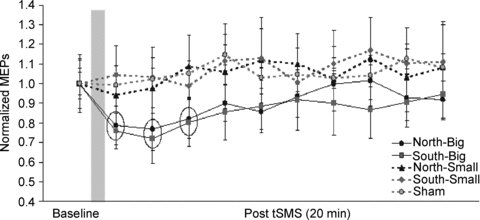
Oliviero et al. Results showing effects of larger more powerful magnet (north and south pole) on bottom two lines.
Static magnetic fields, unlike time-varying pulsed fields are not associated with induced electric currents. They still, none the less, have been shown to influence a variety of biological systems. It has been shown for instance, that certain static magnet designs can change a cell membrane’s permeability to Ca2+ and Na+ ions. Possibly by altering the membrane channels that allow these ions to pass, which is a key factor in how nerve signals propagate. This post discusses a research paper that models a number of static magnetic field’s effects on neurons. Using TMS as a validated method to evaluate cortical excitability changes, powerful neodymium static magnets placed over the scull at M1 affected cortical nociceptive processing. This suggests that tSMS could function as a non-invasive brain stimulation tool for the treatment of chronic pain in combination with more conventional treatment methods.
Like virtually all treatments using static magnets, it’s simple, relatively inexpensive, is safe with negligible side-effects, requires no surgery or ongoing costs and avoids the side-effects of medication. Like any new treatment, the question needs to be asked, does it work? The ultimate question however, is do the benefits outweigh the risks and justify the costs? The simplicity and low costs certainly sets a low bar in that respect.
SIMILARITIES WITH TRADITIONAL MAGNETIC THERAPY USING STATIC MAGNETS:
While there are so many variables with regard to general magnetic field therapy for pain, there are also variations between patients. For TMS these include gross anatomy such as scalp and skull thickness, head diameter, skull to brain distance and cortical folding. At the micro level there can be differences in tissue and anisotropy all of which can result in differences in the magnetic field exposure across patients, even for the same magnetic “dose”. This can be further complicated by the presence of any pathology, such as a skull defect or implant, atrophy, tumour or infarction. Operator error can also be an issue.
According to a seminar run by a pioneer in the field Dr Mark George, some of the early clinical trials did not show a benefit because researchers “jumped the gun”. They hadn’t yet refined the process, determined the best region of the brain to target with the magnetic field, which type of patient to focus on or the strength and pulse of the magnetic field.
For the purpose of reporting and reproducing research and clinical protocols, the following factors have been deemed relevant for TMS…
- Complete characterization of coil electrical current waveform, e.g. pulse, shape, amplitude, width and polarity.
- Pulse repetition frequency, duration of and interval between bursts or trains of pulses, plus total number of pulses.
- For repeated sessions, intervals between sessions and total number of sessions.
These parameters are comparable with those determined by Colbert for static magnetic field therapy. See Table below.

The Journal of Alternative and Complementary Medicine 2008.14:577-582
EMERGING TMS APPLICATIONS:
Multiple Sclerosis – it’s obvious that TMS will activate cell types other than those specifically targeted. One such non-neuronal cell are glia cells which help protect and maintain the function of nerve cells. Researchers are exploring how TMS might stimulate glia cells to repair myelin, the loss of which is a key driver of MS.
Migraine – some studies have shown single-pulse sTMS to be effective in treating migraine. This may be due to neural and/or vascular effects, but is not well understood.
Let’s hope that with continued innovation and research, patients will see the benefits of better treatments with fewer side-effects and less expense. That’s the exciting potential on static magnetic field therapy.
REFERENCES:
Colbert, Agatha P., Markov, Marko S., et al. (2008). “Static Magnetic Field Therapy: Dosimetry Considerations.” J Altern Complement Med Jun;14(5):577-82 PMID: 18532897; doi.
George MS, Wassermann EM, Williams WA, et al. Daily repetitive transcranial magnetic stimulation (rTMS) improves mood in depression. Neuroreport. 1995;6(14):1853–1856. PMID: 8547583
George MS. Stimulating the Brain. Scientific American 289, 66 – 73 (2003). Link
Janicak, P.G. et al (2015). Transcranial magnetic stimulation for the treatment of major depression. Neuropsychiatr Dis Treat. 2015;11:1549-1560 PMID: 26170668
Kirimoto, H. et al (2018). Transcranial Static Magnetic Field Stimulation over the Primary Motor Cortex Induces Plastic Changes in Cortical Nociceptive Processing. Front Hum Neurosci. 2018 Feb 15;12:23 PMID: 29497371, doi
Klomjai, W., et al (2015). Basic principles of transcranial magnetic stimulation (TMS) and repetitive TMS (rTMS). Ann Phys Rehabil Med. 2015 Sep;58(4):208-13. PMID: 26319963
Oliviero A., et al. (2011). Transcranial static magnetic field stimulation of the human motor cortex. J Physiol. 589.20 (2011) pp 4949-4958. PMID: 21807616, doi
Peterchev A.V. et al (2013) Fundamentals of transcranial electric and magnetic stimulation: Definition, selection, and reporting practices. Brain Stimulation. (2012) 5, 435-53

